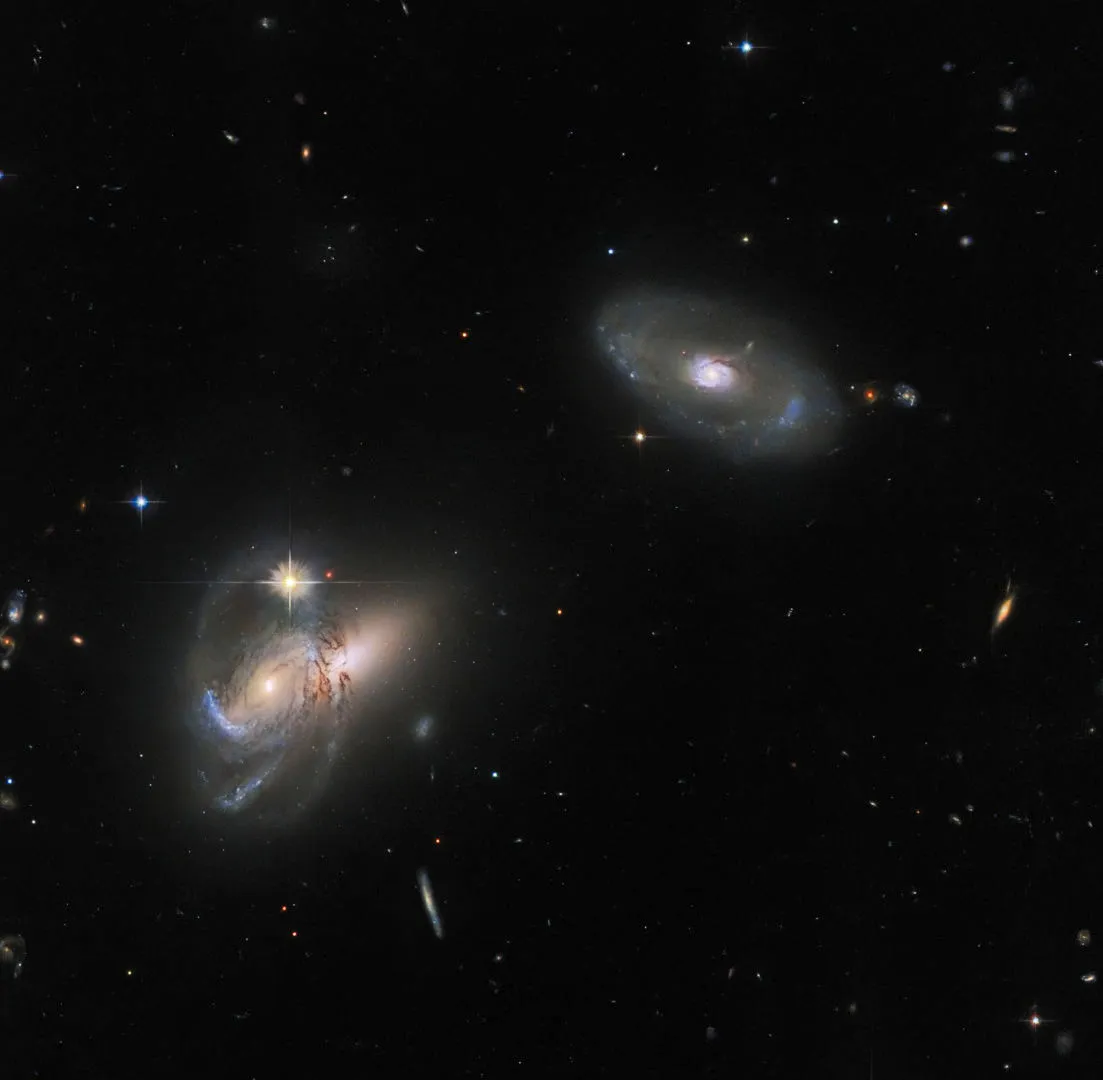TON 618 is, strictly speaking, a quasar, but the name also refers to the supermassive black hole (more properly TON 618*) that powers it, which is one of the largest ever discovered.
Taking its name from the Tonantzintla Observatory in Mexico, it was first observed and catalogued by astronomers Braulio Iriarte and Enrique Chavira in 1957.
TON 618 lies some 18.2 billion lightyears from Earth, in the constellation Canes Venatici, and is 40 billion times the mass of our Sun.

AGNs and quasars
When first observed, TON 618 was thought to be a blue star. Then in 1970 a radio survey conducted in Italy detected radio emissions coming from the object, identifying it as a quasar.
A quasar is type of active galactic nucleus (AGN). Quasars are among the most distant objects you can see with an amateur telescope.
An AGN is a region in the centre of a galaxy that emits significant amounts of electromagnetic radiation, which comes from the material falling into the supermassive black hole that lies at the galaxy’s very heart.

Not all galaxies have AGNs – our own Milky Way doesn’t, for starters.
It’s thought that, as supermassive black holes steadily ‘eat’ their way through all of the available gas and dust in the region, the material falling into them emits less and less radiation, so that eventually the galactic centre is no longer active.
AGNs can be broken down into numerous sub-classes based on the strength of the radio waves they emit, the relative proportions of visible, IR and UV light, whether or not they emit X-ray radiation and other spectral characteristics.

These sub-classes include Seyfert galaxies, radio galaxies, LINERs (low-ionization nuclear emission regions) and, the most powerful of them all, quasars.
So, to recap: stuff falls into a black hole, stuff emits electromagnetic radiation, and that radiation shines out so brightly that we often can’t actually SEE the galaxy that the supermassive black hole (and hence the surrounding AGN) are at the heart of, because its stars’ light is simply outshone by that coming from the AGN.
Then that light reaches Earth X milllion or billion years later and we call it a quasar. TON 618 is one of those.
Got it?

Now, here’s the kicker: the supermassive black hole that powers TON 618 is absolutely enormous.
It’s so big, in fact, that words alone can’t really do it justice.
So over to NASA, who’ve put together this video that really brings the sheer size of these objects to life.
Ton 618 - largest black hole ever?
With about 40 billion times the mass of the Sun and a diameter about 30-40 times that of our Solar System, TON 618 is a strong contender for the title of ‘largest black hole ever discovered’.
Though it’s worth noting that there are various ways you can compare black holes.
So while TON 618 would be many astronomers’ pick for the top spot, there are a couple of others, Phoenix A* and the snappily-named SDSS J140821.67+025733.2, that also have their supporters.
And then there's the ultramassive black hole in galaxy Abell 1201.

That’s a story for another day, but one last note on TON 618 before we go.
As described above, the putative galaxy that must, presumably, surround the quasar isn’t visible to astronomers.
What we can detect, though, are significant emissions of what is known as the Lyman-alpha line, an ultraviolet wavelength emitted by neutral hydrogen.
The levels of this radiation coming from TON 618 are so intense that astronomers have concluded the region must also be home to a Lyman-alpha blob – a large cloud of gas surrounding a galaxy – measuring some 330,000 lightyears across.
That’s more than twice the size of the entire Milky Way.

